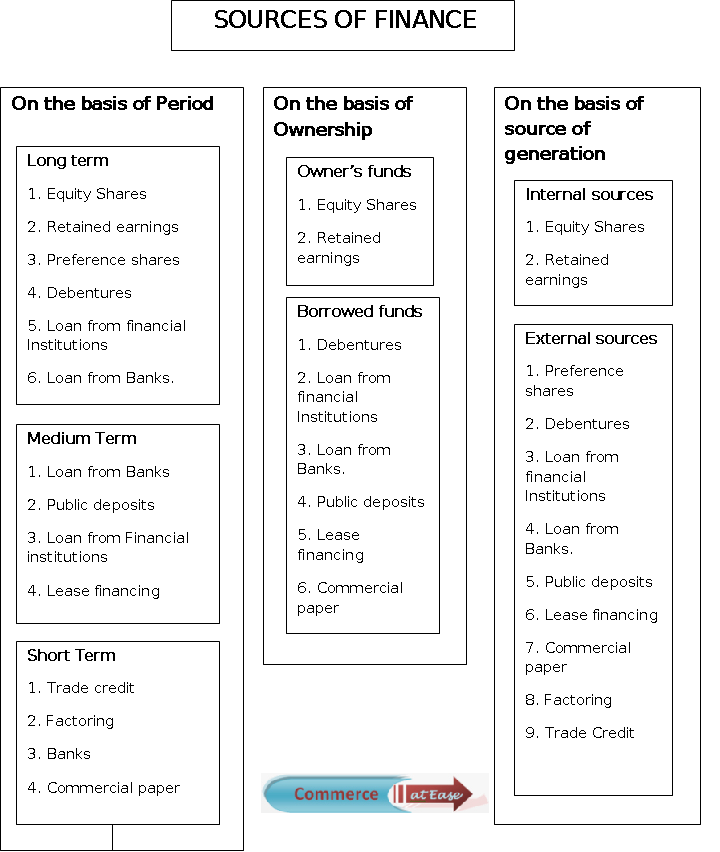(A) On the basis of time period:
The business needs funds for longer period to be invested in fixed assets like land and building, machinery etc. or for shorter period for meeting day to day expenses. Based on the period for which the funds are required, the business finance is classified into three categories.
1. Short-term Finance;
2. Medium-term Finance; and
3. Long-term Finance;
1. Short-Term Finance
Funds required to meet day-to-day expenses are known as short-term finance, like funds required for purchase of raw materials, payment of wages, rent, insurance, electricity and water bills, etc. The short-term finance is required for a period of one year or less. It is also known as working capital requirement or circulating capital requirement.
2. Medium-Term Finance
Medium-term finance is utilized for all such purposes where investments are required for more than one year but less than five years, like for modernization and renovation, special promotional programmes etc.
3. Long-Term Finance
The amount of funds required by a business for more than five years is called long-term finance, like for the purchase of fixed assets like land and building, plant and machinery furniture etc. It is also known as fixed capital as it is of a permanent nature.
(B) On the basis of source of generation:
Broadly speaking, there are two main categories of sources of business. These are: (1) internal source; and (2) external source.
1. Internal source:
When the businessman invests his own money (called owner’s capital), and retains a part of the profits earned in the business it constitute the internal sources of finance.
2. External source:
The various external sources from where businessmen can get the finance include, friends and relatives, banks and other financial institutions, moneylenders, capital market, manufacturers and producers, customers, foreign financial institutions and agencies, etc.
External funds may be costly as compared to those raised through internal sources.
(C) On the basis of ownership:
1. Owners’ funds:
Owner’s funds are the funds provided by the owners of an enterprise, which may be a sole trader or partners or shareholders of a company. It includes profits reinvested in the business (retained earnings).
2. Borrowed funds:
‘Borrowed funds’ are the funds raised through loans or borrowings from others like commercial banks, loans from financial institutions, issue of debentures, public deposits and trade credit.
Types of Business Finance - Chart

Learning Activity 1
